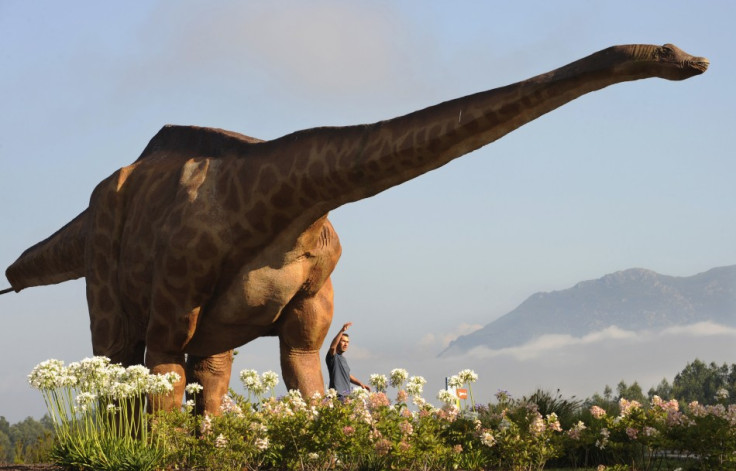Dinosaur Fossils Show Omnivorous Appetite

Dinosaurs fossils found in southern Alberta show that some creatures that roamed the seas 74 million years ago were able to eat just about anything in order to survive and thrive.
A research team recovered the remains of two prognathodon specimens, often described as marine reptiles about six-metres long also closely related to lizards, 30 km southwest of Lethbridge in 2002 and 2007.
The newly discovered fossils are said to be the world's only fossils of this species to have been found with both the skulls and skeletons intact.
The research was led by Royal Tyrrell along with Takuya Konishi and Donald Brinkman, who studied the fossils in an attempt to unravel a real prehistoric puzzle.
When examining the preserved guts of the second prognathodon, also part of the mosasaurs family, scientists discovered a large fish about 1.6 meters long, a 60-cm turtle shell and what they described as a potential ammonite jaw.
"What was significant was this prognathodon was capable of feeding not only on fish, like most mosasaurs did, but it could also eat turtles," said Konishi.
"That tells us it was able to slice meat with its teeth and it could also crunch hard-shelled animals."
This new finding thus indicates the prognathodon was "almighty" in its marine food chain, Konishi also added.
The discovery also helped scientists piece back together part of an evolutionary puzzle as earlier research showed that while the prognathodon heads were large, their torsos proved to be much smaller.
"Despite its massive head, the skeleton wasn't at all massive, it was disproportionately slender," said Konishi.
The new study showed that the mosasaurs' heads were among the first body parts of the creatures to evolve and were adapting so the reptiles could diversify their eating habits, largely improving their survival rate, and leading them to thrive at the top of their ecosystem.
The findings are published in the September edition of the Journal of Vertebrate Paleontology.
© Copyright IBTimes 2024. All rights reserved.





